I introduced Shirakawa-go of the world heritage in Gifu Prefecture.
This is a mountain village of the unexplored region in where many old houses with A-frame remain.
The characteristic of the architecture with A-frame is the big triangle roof that is made of thatch.
岐阜県にある世界遺産の白川郷を紹介します。
ここは合掌造りの古民家が残る秘境の山村です。
合掌造りの特徴は、茅で葺いた大きな三角屋根です。
< Position of Shirakawa-go >
Upper map: The upper side is the north, and Japan Sea can be seen. A red mark is Shirakawa-go.
Lower map: it is viewing the yellow frame from north, by Google Earth.
The basin is sandwiched by two mountain ranges as much as 2,000m high, and heavy snow is brought from Japan Sea in winter.
上の地図: 上側が北で、日本海が見える。赤い点が白川郷
下の地図: 黄色い枠を北から見た。Google Earthによる
この盆地は周囲を2000m級の山脈に挟まれ、冬には日本海から大雪がもたらされます。
< A sightseeing map and a full view of Shirakawa-go >
Old houses crowd in the small basin.
Many stores like old house are in line along both sides of a highway, and many tourists are enjoying the atmosphere of the mountain village.
狭い盆地に古民家が密集している。
街道の両側には古民家風の商店が並んでおり、多くの観光客が山里の雰囲気を楽しんでいる。
< Shogawa is flowing through the side of the basin. >
The rice plant and vegetables are planted in the narrow field around the old houses.
The living of a mountain village from several hundred years ago has been breathing here.
民家の周囲の狭い田畑には稲や野菜が植えられている。
数百年前からの山里の暮らしが、ここに息づいている。
< A gate of the temple. The thatched gate is unusual. >
< The Yahata Shinto shrine surrounded by gigantic tree. >
Walking along the village, I felt unaccountable warmth.
Why were many large houses like this made in narrow arable that was completely isolated with mountains?
May its reason be based on living in snow and a deep forest?
Next time, I introduce the inside of the architecture with A-frame, and the four seasons of the mountain village.
And I investigate a way of the living.
村を歩いていて、私は不思議な温もりを感じた。
この山深く隔絶された猫の額ほどの耕地に、これほどの大きい家がなぜ多数作られたのだろうか?
それは人々が雪と深い森との関わり方にあったのだろうか?
次回は、合掌造りの内部と山里の四季を紹介し、その暮らしぶりを探ります。


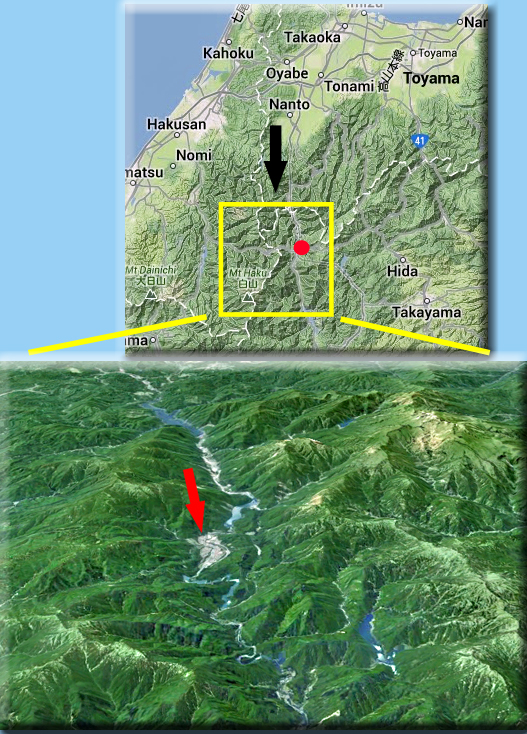







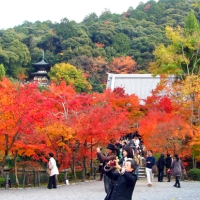
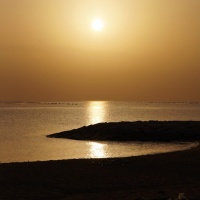


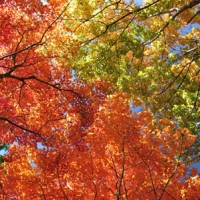

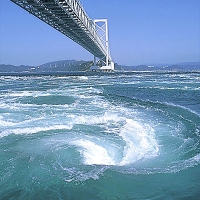

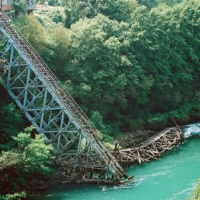













こんにちは!
茅葺の家は夏は涼しく、冬は暖かいのでしょうね。
将来、茅を葺くベテランがいるか心配です。
そうでしょうね。葺き作業は、現在、ボランテイア団体が主催して行っているようです。
aquacompassこんにちは、白川郷は2回ほど行きました。夏と冬に。
この地域には結い習慣が有り茅葺きを村人全員んが協力すると云う良い習慣です。
又、のんびりと散策したいもんです。
合掌造りを見るのは2回目ですが、白川郷は始めてでした。いつもは飛び歩く感じなのですが、今回はゆっくり散策したました。親父の田舎が石川県の山麓だったので、懐かしさを感じて来ました。
I went to Gifu last year but only to Gifu Koen and Gifu Castle. I wish I could have explored more and seen this area, it’s beautiful.
日本語ですいません。確かにここは素晴らしいです。古き良き田舎の風情があります。ただかなり観光化していました。保存のためには仕方がないでしょうが。
Reblogged this on Japan: SEV Student Trip with Mutsumi.
thank you reblogging my article.
日本のこの部分への私の魅力は私が唯一の私の心にそこにしてきた深いにもかかわらず実行されます。楽しい旅だったに違いない何共有していただきありがとうございます。My attraction to this part of Japan runs deep even though I’ve been there only in my mind. Thank you for sharing what must have been a pleasurable trip.
My nostalgia also ran deep in there. Here is the old mind of Japan. It reflect the architecture too.
Beautiful… It reminded me of the mountain village of my fore-fathers in the Himalayas, life was much tougher for them – travel between urban cities and the villages was extremely difficult.
Please teach me. Was there the statue of deity of Brahmanism, the murti of Hindooism, in India before the Common Era? It is about the statue of Siva, Brahma, and Indra etc.
I think that they began to be made after the 1st Century A.D.
when was the oldest statue of deity of Brahmanism born ?
How is it written to the Veda of the ancient Indian scripture about the statue of deity?
For example, “ must not make it and must not worship it.”
I think that the oldest Buddha statue will have been made after the 1st Century A.D. in northwest India.
It seems that the statue of the goddess( yakusi ?) has appeared about the 2nd century B.C.
教えて下さい。紀元前のインドに、バラモン教の神像はあったのですか? それはシヴァ、ブラフマー、インドラの神々の彫像についてです。それらが作られ始めるのは紀元後ではないのですか? 一番古いバラモン教の神像は何時誕生したのでしょうか? 経典のヴェーダーには神像について、どのように書かれているのですか? 例えば、それを作って、崇めてはならないとか。最古の仏像は西北インドで紀元1世紀以降だと思うのですが。女神のヤクシー像は紀元前2世紀頃には出現していたようですが。
Well its a very interesting topic you have picked up for discussion. History of India and Hinduism goes well beyond the last 2000 years. In fact starting from 700AD and till 1947 was an extremely painful part of our history where invader tried to destroy everything, including the Hindu religion. First I will answer your questions in short. But I would need to explain it in detail to make it clear.
a) Was there the statue of deity of Brahmanism, the murti of Hindooism, in India before the Common Era? – Yes, they were there from before Common Era.
b) When was the oldest statue of deity of Brahmanism born? – They existed even in the Pre-historic era, much before the Vedic Era (1500-1000BC) – Scientific evidence like Symbols/Seal/Icon of Hindu deities e.g. Shiva are found from the excavation at Indus Valley/ Harrapa civilization sites. Most of the pre-common era statues were destroyed after 700AD by Islamic invaders who hated Idol worshiping.
c) How is it written to the Veda of the ancient Indian scripture about the statue of deity?- Vedas are mantras – they are like instruction manuals for Brahmans/priests to carry out the worship through personified basic natural elements like Air (Varuna), Fire (Agni) and Rain/Water (Indra).
d) I think that the oldest Buddha statue will been made after the 1st Century A.D. in northwest India. – Yes the oldest surviving Buddha statue is from Gandhara dating back to 1 AD.
e) It seems that the statue of the goddess( yakusi?) has appeared about the 2nd century B.C. – Yes the Oldest surviving Hindu temple is from 108AD Mundeshwari Devi Temple in northern India.
1. The foundation of Hindu religion is the belief in the trinity of Brahma (the creator), Vishnu (the caretaker) and Mahesh/Shiva (the destroyer) were there much before the Common era in Hindu scriptures. It dates back to the Pre-Historic period.
2. As per Hindu traditions the timelines of this world are divided into 4 periods (Yugas) – a.) Satyuga or the golden age of Truth when all humans & Gods were almost equals. The humans were so pious and truthful that whenever they wanted they could summon the Gods. There was no need to carry out special worships to please the gods. b.) Then came the second period Treta followed by the third one called Dwapar. In Treta period humans started making mistakes and losing ground to Demons. Gods had to come in human form (Lord Rama) – set the highest standard of behavior for humans being, defended the Humans by destroying Demons (Ravana). Ramayana – the story of Rama depicts this age of Hinduism and India as a country. c.) In Dwapar period, human lost more grounds to evil and now humans were fighting not against the demons but against fellow humans beings. It was getting hard to distinguish the Evil from the Good, the Gods came in the form of humans, even Gods now started making mistakes and not keeping up the highest standards of morality and ethics. d.) A major war at the end of Dwapar age paved the way for the fourth and last stage of Kalyug, after which the world as we know it today, is supposed to end and a new one would be created by Brahma. This war and this period of Hinduism/ India is depicted in the Mahabharata. Bhagavad Gita is a part of Mahabharata –through a dialogue between Lord Krishna and warrior Arjuna at battlefront, in a very concise manner, Lord Krishna tries to explain the ultimate secret of life, to Arjuna who is confused about the purpose of life.
thank you responding my article. i may reply to your comment after reading your articles.
3. We currently living in this last leg of the journey called Kalyug. After the arrival of Kaliyug (the age of Ignorance/ Untruth/ Falsehood) all the people were not engaged in a pious lifestyle, so the Vedas were specifically created for this age to work like instruction manual for the Brahmins to carry out the worship of Gods in the most pious manner which will please the Gods. Brahmins were now doing the worship not only for themselves but also for other sections of society e.g. the King or Ruling warrior class, the Business communities, and the Working Class.
4. Brahma is credited with the creation of Vedas for the specific purpose of defining the method of worship, though the modern version of Vedas in the form of 4 separate books is written by Vedavyasa – who also wrote Mahabharata. It does not have the philosophical explanation of Hindu Religion or the explanation of all the deities/ Gods/Goddess – that gets covered in a number of other scriptures known as Puranas (Srimad Bhagwatam, also written by Vedavyasa, is the most important Purana and considered as 5th Veda). Unlike many other religions in the world, there is no single book of rules or do’s and don’t in Hinduism. It is more like an integrated course in philosophy wherein you learn from a variety of sources and make your own rules and regulation about how you want to live your life.
I was moved by your wide knowledge and commentary power.
Because my command of English was unripe, I was not able to understand all.
However, I confirmed that there was the lead of the image of deity (Buddha statue) in the prehistoric age with some different documents and understood.
I intend to write the history of the Buddha statue in my blog someday.
It became very helpful. I need your help well from now on.
私はあなたの博識と解説力に感銘した。英語力が未熟なので、総べて理解することは出来ませんでした。しかし先史時代に神像(仏像)の先駆けがあったことは別の資料で確認し納得しました。いずれ仏像の歴史をブログに書くつもりです。大変参考になりました。これからもよろしくお願いします。
5. Views of historians & expert from across the world suggest that the Vedas in the present form/language are there since 1000-1500BC, The deities described in Vedas are basically personification of the forces of nature – Varuna=Air, Agni=Fire, Indra=Rain/Water, etc. Indra is considered chief deity in Vedas, the king of Gods who maintains the separation between Heaven and Earth. Fire/Agni works like a conduit between the Gods and Humans – the offerings which are meant for various Gods are given to Agni/ Fire during the worship/ Yagya.
6. Vedas are not the origin of Hinduism, they are traditional sacred text explaining the rituals which the Brahmans/Priests are suppose to carry out to please the Gods. Brahmans/Priests carried out these worships/Yagya. There are 4 Vedas – The three Vedas – Yajurveda, Samaveda and Atharvaveda are independent collections of mantras and hymns intended as manuals for the all Brahmans, to carry out regular procedures of worshiping (Yagya). The Atharvaveda is the fourth Veda, its status has occasionally been ambiguous, probably due to its use in sorcery and healing, not all Brahmans are suppose to use the Atharvaveda.
7. The physical statues of Hindu deities as they exist today in the temples of India are from the recent periods (last 2000 years) but the deities were there even before – the scientific proof of their existence is there in form of a) relics from excavation done on the sites of Indus Valley/ Harrapa Civilization which existed between 33 to 14 century BC, b) Images on the walls of the caves in many parts of India, and c) description in Hindu scriptures (other than Vedas).
8. The period between 200BCE to 700AD was an amazing period in India – it was at the top and the whole world was envious of its riches. Many religions branched out of Hinduism during this period, including Buddhism. India was not one country like it is right now, it was made-up of big and small kingdoms spread from what is today Afghanistan in West and spreading upto Burma in the East. There were natural boundaries in North (Himalayas) and South (Indian Ocean/ Arabian Sea) There were fighting’s between various Kings and their Kingdoms, but they were not based on the religious themes. People were not converted forcefully, religious symbols were not destroyed purposefully. The influence of Hinduism was spared across Combodia, Indonesia, Thailand and till Bali. Buddhism started around the 400BC went even further and spread across China and reached till Japan. But it was all peaceful, not like the violent Islamic/ Christian wars in middle-east and Europe; or the forceful ethnic cleansing in Americas/ Australia/ enslaving of humans from Africa.
9. Most of the temple and statues of deities were destroyed by foreign invaders which started coming to India around 7th century AD, starting with the Islamic Invaders from the middle east who considered them un-islamic, symbol against their own religion and hence blasphemous. The most recent example being the destruction of Bamiyan Buddha statues by the Taliban in Afghanistan.
10. Very few temple/ statues survived these dark centuries. Some in Southern part of India or high up in the northern Himalayan mountains. Even these were first looted of all the valuables and historic relics and then reconstructed during the British colonial rule in India. Most of the artifacts belonging to ancient Hindu religion/ ancient India were either destroyed or taken away by these foreign invaders. All that was left was the Hindu belief system inside the heart of the people. Some of the cruel invaders even forcefully converted people to their own religion. But I guess it was the strength of the Hindu belief system that even though all the physical symbols were being destroyed, the people kept the thoughts alive inside their hearts. When the temple/ statues/ scriptures were being destroyed, Hindus started making small temples inside their homes, using whatever material they could afford and orally passing on the knowledge of religion and scriptures from one generation to another. There were times when a specially harsh tax called Jazia was imposed in India for those who wanted to follow Hinduism by a Mughal King Aurangzeb. The Christian missionary sponsored by British/ Portuguese/ French invaders also kept buying people faith through incentives like money, western education, enhancement of social status. But still India continues to be a Hindu majority country – it’s a miracle and a proof that there exist some Superpower entity somewhere in the universe which is managing is managing it all. You may call it by any one single name or multiple names, it hardly matters. Even if you believe in only in science and logic, you would accept the possibility of such a scenario.